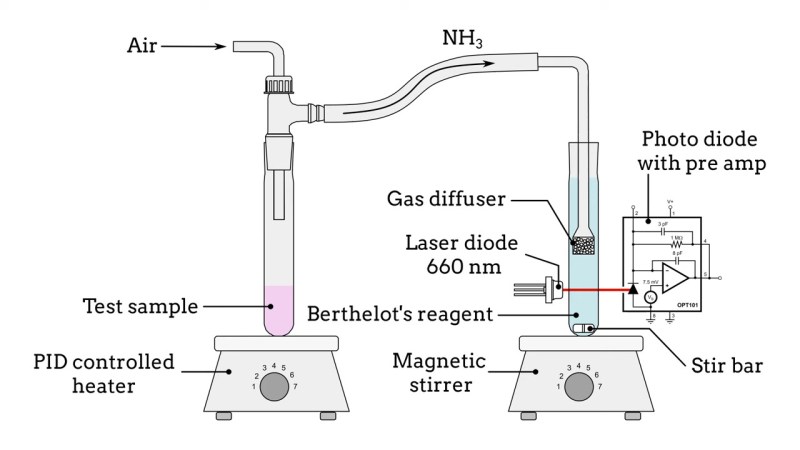Integrated Micro Lab Keeps Track of Ammonia in the Blood

We’ve all got our health-related crosses to bear, and even if you’re currently healthy, it’s only a matter of time before entropy catches up to you. For [Markus Bindhammer], it caught up to him in a big way: liver disease, specifically cirrhosis. The disease has a lot of consequences, none of which are pleasant, like abnormally high ammonia concentration in the blood. So naturally, [Markus] built an ammonia analyzer to monitor his blood.
Measuring the amount of ammonia in blood isn’t as straightforward as you think. Yes, there are a few cheap MEMS-based sensors, but they tend to be good only for qualitative measurements, and other solid-state sensors that are more quantitative tend to be pretty expensive since they’re mostly intended for industrial applications. [Marb]’s approach is based on the so-called Berthelot method, which uses a two-part reagent. In the presence of ammonia (or more precisely, ammonium ions), the reagent generates a dark blue-green species that absorbs light strongly at 660 nm. Measuring the absorbance at that wavelength gives an approximation of the ammonia concentration.
[Marb]’s implementation of this process uses a two-stage reactor. The first stage heats and stirs the sample in a glass tube using a simple cartridge heater from a 3D printer head and a stirrer made from a stepper motor with a magnetic arm. Heating the sample volatilizes any ammonia in it, which mixes with room air pumped into the chamber by a small compressor. The ammonia-laden air moves to the second chamber containing the Berthelot reagent, stirred by another stepper-powered stir plate. A glass frit diffuses the gas into the reagent, and a 660-nm laser and photodiode detect any color change. The video below shows the design and construction of the micro lab along with some test runs.
We wish [Markus] well in his journey, of course, especially since he’s been an active part of our community for years. His chemistry-related projects run the gamut from a homebrew gas chromatograph to chemical flip flops, with a lot more to boot.
from Blog – Hackaday https://ift.tt/3U2TXBM
Comments
Post a Comment